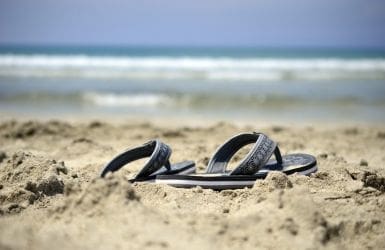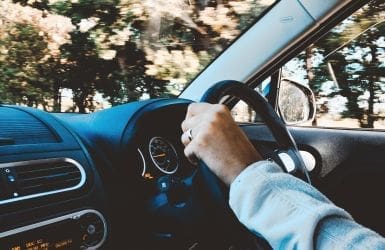
What is BPM?
BPM is the tax you pay for a passenger car, van or motorcycle and is calculated for a passenger car based on its CO2 emissions .
All about BPM
BPM is the tax you pay for a passenger car, van or motorcycle. The tax authorities calculate the BPM for a passenger car based on itsCO2 emissions . For a van, camper or motorcycle, it is a percentage of the net catalog price. Moreover, you also pay BPM on certain extras that are part of the net catalog price, such as extra options, accessories and extra costs for special versions. A car or motorcycle is not registered until the tax return has been filed and the BPM has been paid. Only from that moment may you take the vehicle onto public roads. The person in whose name the vehicle is registered must pay BPM.
What does BPM mean?
BPM is the abbreviation for "tax on passenger cars and motorcycles. You are required to pay this in the Netherlands for every passenger car, van and motorcycle registered in the Netherlands. You also have to pay when these vehicles are not registered in the Netherlands and a Dutch resident drives them on the road in the Netherlands. As an entrepreneur, when buying a van, you do not owe BPM for sales tax. When it comes to car insurance, whether or not you have to deduct BPM can affect the amount of the premium.
When do you have to pay?
A car or motorcycle is not registered (put on license plates) until BPM has been declared and paid. Only then may you take the vehicle onto public roads. In the case of a delivery van, if you are not an entrepreneur or do not qualify for the entrepreneurial scheme, you must declare and pay within one month after registration. You may drive it on public roads during that month.
BPM must be paid in the following cases:
- If you want to register a passenger car, delivery van or motorcycle with the RDW. You pay for a delivery van if it was put into use for the first time on or after July 1, 2005, and you are not an entrepreneur or do not meet the entrepreneur scheme.
- You are driving on public roads with a van that has been converted into a passenger car. This is a van on which BPM has not yet been paid or for which you have not yet recovered it.
- You get a passenger car, van or motorcycle from abroad and want to register it with the RDW.
- You convert a van put into service before July 1, 2005, into a passenger car.
- You no longer meet the conditions of the entrepreneurial scheme, the disability scheme or the cab or public transportation scheme.
- You live in the Netherlands and drive a passenger car, van or motorcycle here with a foreign license plate.
- You live in the Netherlands and want to drive here for longer than 14 days in a passenger car, motorcycle or van with a foreign license plate that you borrowed, rented or leased abroad.
- You modify the engine of a passenger car within three years of registration such that the CO2 emissions are higher than the CO2 emissions on which tax has been paid.
When do you not have to pay BPM?
For a passenger car, van or camper with CO2 emissions of 0 grams per kilometer, no BPM has to be paid.
You also do not pay BPM for a passenger car that was first put into service on or after January 1, 2009 and is equipped with:
- A gasoline engine with CO2 emissions not exceeding 110 grams per kilometer.
- A diesel engine with CO2 emissions of up to 95 grams per kilometer.
How do you pay?
With a new car or motorcycle, it is ultimately the importer who transfers the BPM to the tax authorities. The dealer puts the amount in the customer's account, and passes it on to the importer.
In other cases, you use the 'BPM return' form. Fill it in and send it to one of the sixteen BPM declaration points of the Tax and Customs Administration. After checking, you will receive a payment notification with the amount, reference and account number. You can use this to pay via your bank.
What are the BPM rates?
Click here for a schedule of fees.
What is residual BPM?
When you import a used car, you don't pay the full amount. You only have to pay part of the original amount. This part is also called residual BPM. It is calculated based on several factors, such as the age of the car and mileage, for example. This drops, just as a new car drops in value.
How do you calculate BPM on importation?
Calculating BPM involves calculating the amount you have to pay. For a passenger car, you make this calculation based on the CO2 emissions of your car. For a van, camper or motorcycle the BPM is a percentage of the net catalog price. Do you want to import a car from abroad? By calculating this you can determine whether or not importing a particular car pays off. Here you can see per vehicle how to calculate the BPM.
Refund
You can reclaim BPM if you:
- A passenger car used for cab or public transportation.
- A van used to transport a disabled person and their wheelchair or other assistive device.
Entrepreneurial scheme how about that?
Entrepreneurs do not pay BPM when purchasing a van. This exemption is granted automatically if you are an entrepreneur for sales tax purposes. However, the amount does count towards the additional taxable benefit. If you do not meet the entrepreneur rule, you must declare and pay the BPM within one month after registration. You may use the car on public roads during that month.
You can arrange your car insurance online at Alpina! Do you prefer personal contact? Our customer service is happy to help you find an answer to your question as quickly as possible. Call 088-6883700 for help at your convenience.
More BPM terms
BPM meaning
The meaning of BPM is Tax on Passenger Cars and Motorcycles. So this is the tax you pay for a passenger car, van or motorcycle. The tax authorities calculate the BPM for a passenger car based on its CO2 emissions. For a van, camper or motorcycle, the BPM is a percentage of the net catalog price. Moreover, you also pay over certain extras that are part of the net catalog price, such as extra options, accessories and extra costs for special versions. So BPM declaration means declaring your vehicle to the tax authorities.
BPM car
For many people, the main reason for importing a car from abroad is the price advantage. Cars from abroad are often cheaper to buy. But what about the BPM? By calculating this, you can determine whether or not it pays to import a particular car. When importing a car, the amount is calculated on the basis of the net catalog price (in the case of a van, camper or motorcycle, for example) or the CO2 emissions (in the case of a passenger car) that a comparable car in the Netherlands would have had at the time of its first use abroad.
BPM amount
What amount you pay depends on the type of vehicle you have. For a passenger car, the BPM is calculated based on its CO2 emissions. With a van, camper or motorcycle, it is a percentage of the net catalog price. Moreover, you also pay over certain extras that are part of the net catalog price, such as extra options, accessories and extra costs for special versions. However, if your vehicle has CO2 emissions of 0 grams/km, you do not have to pay BPM.
Netherlands
The Netherlands has had the Wet op Belasting van Personenauto's en Motorrijwielen, or BPM law, since 1992. You are required to pay BPM in the Netherlands for every passenger car, van and motorcycle registered in the Netherlands. You also have to pay when these vehicles are not registered in the Netherlands and a Dutch resident drives it on the road in the Netherlands. BPM is levied by the Dutch government. Whereas in the past it was always based on the new car price, since 2010 this has been slowly converted to a system where the CO2 emissions determine how high the BPM is for a vehicle.
Rate
Are you importing a used vehicle from abroad? Then you do not have to pay more than the BPM that applies to a similar car in the Netherlands. You can then use the lowest rate between the date the car was taken into use and the date of your tax return. It does not matter whether the car was first used in the Netherlands or abroad. Is the old rate lower than the current rate? Then according to the Tax Office you may use the old rate when calculating.
Percent
For a van, camper or motorcycle, the BPM is a percentage of the net catalog price. You can calculate the BPM for your vehicle yourself using this percentage. For a van or camper, it matters whether the car has a diesel engine or not. Although the percentage remains the same, you have to add or subtract an amount depending on the fuel. For a motorcycle, the amount of net catalog price of the engine affects the percentage.
Related pages about importing a car
Never underinsured
Put together your own package
A wide range
We compare all insurers for you, saves time again
Help from our experts
Can't figure it out? Our experts are always ready to help you
We can be reached via chat, WhatsApp, phone or email
Questions? Contact us if you want to know more.
We are here Monday to Friday from 08:00 to 18:00.


